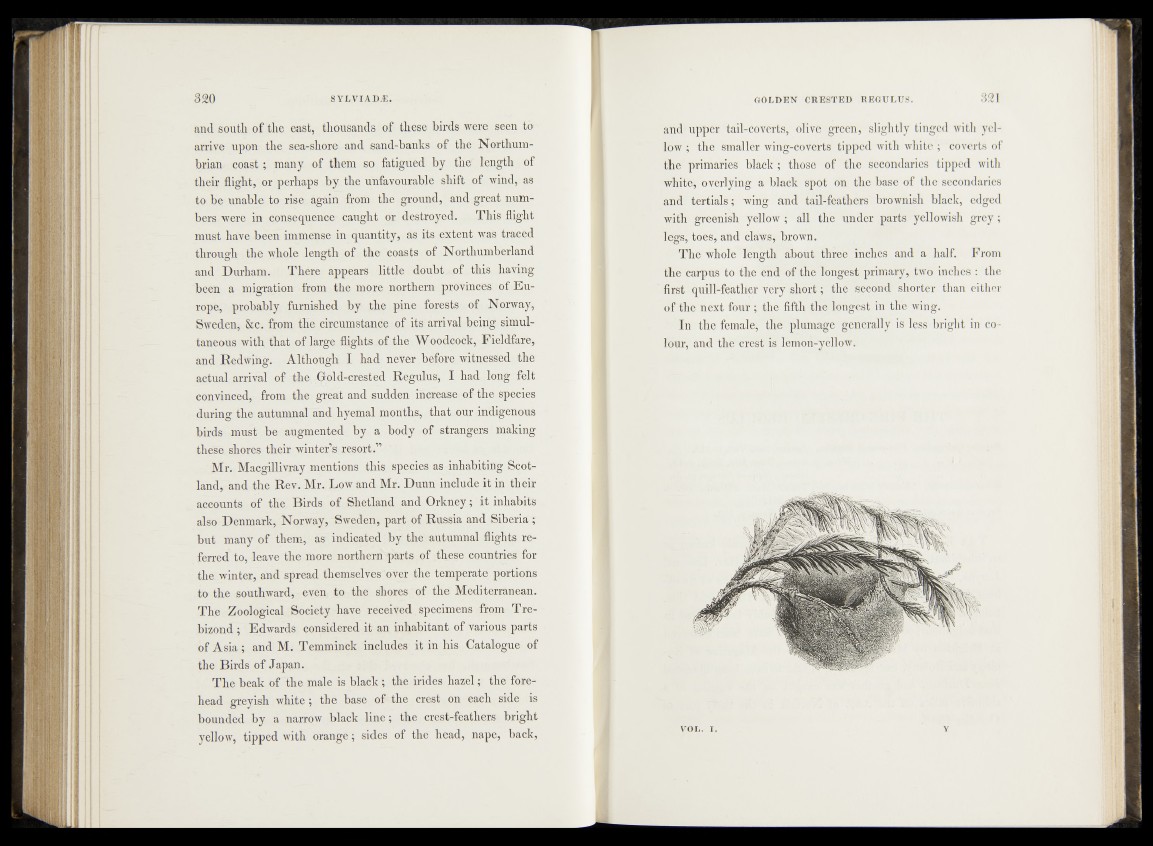
and south of the east, thousands of these birds were seen to
arrive upon the sea-shore and sand-banks of the Northumbrian
coast; many of them so fatigued by the' length of
their flight, or perhaps by the unfavourable shift of wind, as
to be unable to rise again from the ground, and great numbers
were in consequence caught or destroyed. This flight
must have been immense in quantity, as its extent was traced
through the whole length of the coasts of Northumberland
and Durham. There appears little doubt of this having
been a migration from the more northern provinces of Europe,
probably furnished by the pine forests of Norway,
Sweden, &e. from the circumstance of its arrival being simultaneous
with that of large flights of the Woodcock, Fieldfare,
and Redwing. Although I had never before witnessed the
actual arrival of the Gold-crested Regulus, I had long felt
convinced, from the great and sudden increase of the species
during the autumnal and hyemal months, that our indigenous
birds must be augmented by a body of strangers making
these shores their winter’s resort.”
Mr. Macgillivray mentions this species as inhabiting Scotland,
and the Rev. Mr. Low and Mr. Dunn include it in their
accounts of the Birds of Shetland and Orkney; it inhabits
also Denmark, Norway, Sweden, part of Russia and Siberia ;
but many of them, as indicated by the autumnal flights referred
to, leave the more northern parts of these countries for
the winter, and spread themselves over the temperate portions
to the southward, even to the shores of the Mediterranean.
The Zoological Society have received specimens from Tre-
bizond ; Edwards considered it an inhabitant of various parts
of Asia ; and M. Temminck includes it in his Catalogue of
the Birds of Japan.
The beak of the male is black ; the irides hazel; the forehead
greyish white 5 the base of the crest on each side is
bounded by a narrow black line; the crest-feathers bright
yellow, tipped with orange; sides of the head, nape, back,
and upper tail-coverts, olive green, slightly tinged with yellow
; the smaller wing-coverts tipped with white ; coverts of
the primaries black ; those of the secondaries tipped with
white, overlying a black spot on the base of the secondaries
and tertials; wing and tail-feathers brownish black, edged
with greenish yellow ; all the under parts yellowish grey ;
legs, toes, and claws, brown.
The whole length about three inches and a half. From
the carpus to the end of the longest primary, two inches : the
first quill-feather very short; the second shorter than either
of the next four ; the fifth the longest in the wing.
In the female, the plumage generally is less bright in colour,
and the crest is lemon-yellow.